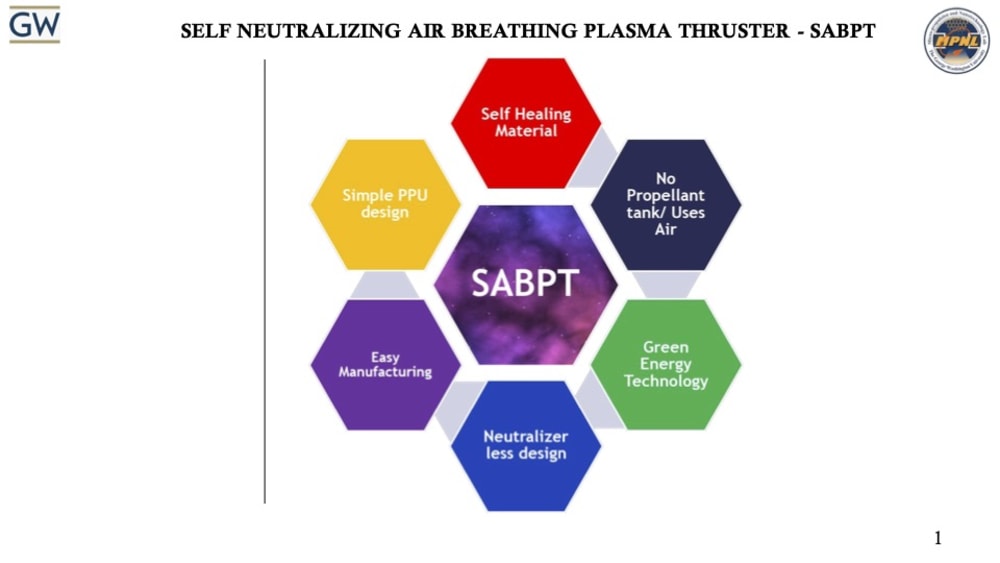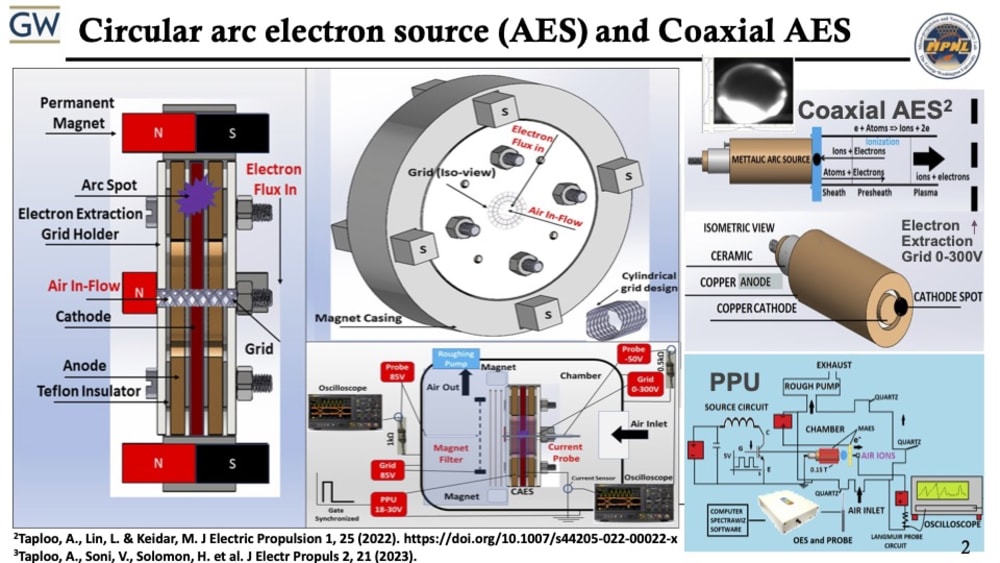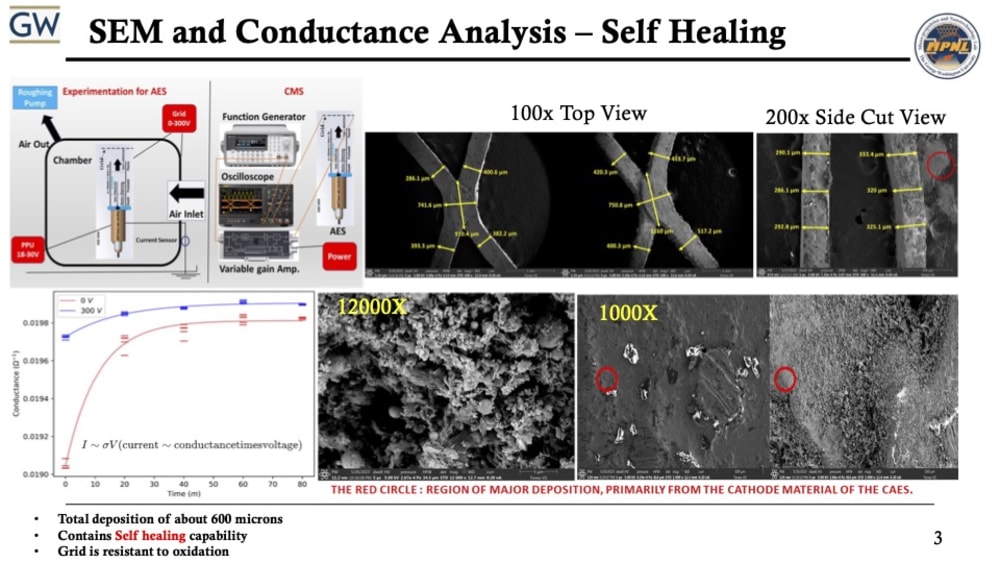
Presently, there is a global consideration for air-breathing electric propulsion ramjet configurations, though those utilizing air scoops face significant momentum losses due to air collimation and drag. Several years ago, an idea emerged for a direct scramjet configuration aimed at reducing drag substantially, requiring full ionization of atmospheric molecules. This concept introduced a new mode of operation for air-breathing thrusters, termed self-neutralizing air-breathing plasma thrusters (SABPT), wherein control over ion production is achieved through electron energy. Initial testing has shown promise in producing both positive and negative ions, laying the groundwork for SABPT utilization.
In recent times, interest in propulsion devices for very low Earth orbits has surged. These devices typically operate within thrust levels ranging from 90mN to 90N to counteract drag levels spanning from 60mN to 60N at altitudes between 80 and 260 km. The air-breathing plasma thruster functions by in situ air propellant ionization to generate thrust within these altitudes, offering advantages such as reduced launch costs, payload optimization by eliminating propellant tanks, and enhanced imaging capabilities. Nonetheless, challenges persist, including devising optimal strategies for air ionization in a rarefied gas environment and constructing collimator-less designs to mitigate additional drag. A recent proposal suggests a scramjet-type configuration without air collimation, potentially simplifying the system and reducing drag.
Traditionally, an air-breathing plasma thruster requires an external neutralizer to introduce electrons for ion beam neutralization. Conversely, the proposed SABPT design leverages both positive and negative ions for beam neutralization. Previous theoretical analyses indicate SABPT's potential for self-neutralization by operating in a mode transitioning from high to low electron energy. The ions generated within the thruster could be extracted using electrodes with alternating potential, based on the polarity of the ion charge, resulting in a self-neutralized beam. Meeting the design prerequisites entails significant control over electron energy for positive and negative ion generation within the SABPT, along with operational stability in challenging air plasma environments. A suggested solution involves utilizing a low-power vacuum arc electron source as a potential electron source for fulfilling the SABPT design criteria.
Furthermore, balancing the objectives of coverage and spatial resolution in satellite imaging poses a significant challenge. Achieving higher coverage often leads to lower spatial resolution, presenting hurdles in achieving optimal performance. Communication satellites in geostationary orbits encounter various obstacles, including latency issues, bandwidth limitations, weather susceptibility, and high operational costs. Moreover, the increasing space debris poses a threat to satellite operations, primarily due to collisions with retired satellites. While thrusters are crucial for satellite control, the challenge of refueling becomes pronounced and financially burdensome if a satellite's thruster requires a propellant tank. Addressing these challenges is crucial for advancing satellite technology and ensuring the sustainability of space operations in the future.
Video
-
Awards
-
 2024 Top 100 Entries
2024 Top 100 Entries
Like this entry?
-
About the Entrant
- Name:Anmol Taploo
- Type of entry:individual
- Patent status:pending








